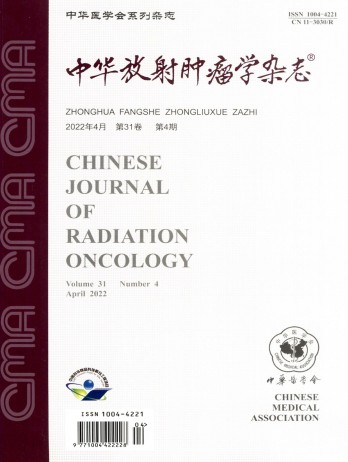后负荷近距离治疗中不同施药器偏移值的验证研究
引用次数: 1
摘要
目的探讨不同应用器在后装近距离放射治疗中的偏置值。方法选用不锈钢间质针(083.062件)、proguide圆针(189.608件)、proguide尖针(189.601件)、阴道多通道敷贴器(110.800件)、,fletcher CT/MR探头(零件号189.745)和henschke钛探头(零件编号110.437)。根据荧光成像胶片中的源成像,可以测量探头在第一停留位置和顶部之间的距离。标记被粘贴在与第一停留位置相对应的施用器的表面上。然后将敷贴器放入骨盆模型中进行CT扫描。在治疗计划系统中的涂抹器重建过程中,可以通过调整偏移值来获取所有涂抹器的偏移值,以叠加第一停留图像和标记图像。由于塑料材料涂抹器的密度与人体组织相似,因此很难重建涂抹器的顶部。借助于塞子或模拟源,可以获得塑料材料涂敷器的偏移值。根据测量结果,分析了不同喷头之间的差异。结果不同用药者的偏移值存在显著差异。不锈钢间质针的偏移值为-11.4 mm,导前圆针为-4.1 mm,导尖针为-3.5 mm,阴道多通道敷料器为0 mm或-5.0 mm,fletcher CT/MR敷料器为-6.5 mm,henschke钛敷料器为-7.5 mm。结论为了适应精确放射治疗的快速发展,有必要验证后装近距离放射治疗中的偏移值。关键词:治疗探头重建;偏移值;放射性核素成像本文章由计算机程序翻译,如有差异,请以英文原文为准。
A verification study of Offset values of different applicators in afterloading brachytherapy
Objective
To investigate the Offset values of different applicators in afterloading brachytherapy.
Methods
Six types of applicators were selected in this study which included stainless steel interstitial needle (Part#083.062), proguide round needle (Part#189.608), proguide sharp needle (Part#189.601), vaginal multi-channel applicator (Part#110.800), fletcher CT/MR applicator (Part#189.745) and henschke titanium applicator (Part#110.437). According to the sources imaging in the fluorography film, the distance of applicators between the first dwell position and the top could be measured. Marker was pasted on the surface of applicator corresponding to the first dwell position. And then the applicator was put into the pelvic phantom for a CT scan. During applicator reconstruction in the treatment planning system, the Offset values of all applicators could be acquired through adjusting the value of offset to superimpose the first dwell and the marker images. On account of the density of plastic material applicators were similar to human tissues, it was difficult to reconstruct the top of the applicator. With the help of stopper or simulation source, the value of offset could be acquired for plastic material applicators. Based on the measurement results, the differences were analyzed among different applicators.
Results
The Offset values significantly differed among various applicators. The Offset value for stainless steel interstitial needle was -11.4 mm, -4.1 mm for proguide round needle, -3.5 mm for proguide sharp needle, 0 mm or -5.0 mm for vaginal multi-channel applicator, -6.5 mm for fletcher CT/MR applicator and -7.5 mm for henschke titanium applicator, respectively.
Conclusion
To adapt to the rapid development of precise radiotherapy, it is necessary to verify the Offset value in afterloading brachytherapy.
Key words:
Applicator reconstruction; Offset value; Radionuclide imaging
求助全文
通过发布文献求助,成功后即可免费获取论文全文。
去求助
来源期刊
自引率
0.00%
发文量
6375
期刊介绍:
The Chinese Journal of Radiation Oncology is a national academic journal sponsored by the Chinese Medical Association. It was founded in 1992 and the title was written by Chen Minzhang, the former Minister of Health. Its predecessor was the Chinese Journal of Radiation Oncology, which was founded in 1987. The journal is an authoritative journal in the field of radiation oncology in my country. It focuses on clinical tumor radiotherapy, tumor radiation physics, tumor radiation biology, and thermal therapy. Its main readers are middle and senior clinical doctors and scientific researchers. It is now a monthly journal with a large 16-page format and 80 pages of text. For many years, it has adhered to the principle of combining theory with practice and combining improvement with popularization. It now has columns such as monographs, head and neck tumors (monographs), chest tumors (monographs), abdominal tumors (monographs), physics, technology, biology (monographs), reviews, and investigations and research.

 求助内容:
求助内容: 应助结果提醒方式:
应助结果提醒方式:


